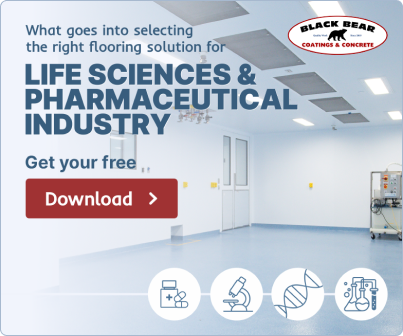Fact, one of the biggest challenges the manufacturing industry faces with regards to industrial flooring is routine maintenance and repair. Depending on the type of production facility, companies typically need to recoat or replace flooring every 5-10 years. During this process, reducing downtime is crucial to avoid any loss of revenue. Shutting down a production floor…
Posts Categorized: Industrial Flooring
As the school year winds down, maintenance crews prepare a rigorous schedule of repairs, restorations, and new additions during the school downtime period. It’s the optimal time to take on flooring projects – with minimal foot traffic on campus. At Black Bear, we partner with public and independent primary and secondary schools, as well as…
There are certain areas of business where antimicrobial flooring is clearly needed, such as biomedical research or food preparation. However, that raises the question: is there any situation where antimicrobial flooring wouldn’t be a worthwhile investment? After all, most resinous floor coatings can receive a treatment of antimicrobial additives or products that will render the floor…
The healthcare and pharmaceutical manufacturing industries require mission-critical performance from a commercial flooring system. The versatility of polished concrete offers an array of benefits that these companies should recognize. Polished concrete has become the solution of choice for many commercial buildings including medical device and drug production facilities. Pharmaceutical companies take advantage of the durability…
Pharmaceutical manufacturing environments are subject to regulations issued by OSHA, as well as the FDA, which affect flooring choices. For example, the FDA’s Current Good Manufacturing Practices (CGMP) dictate that the porous concrete floors in pharmaceutical manufacturing plants must be coated with epoxies that form a barrier against contaminants, pollutants, and contaminants. Regulations also include…
Flexible factories are taking the industry by storm – changing the flow of workspaces to accommodate more business initiatives and innovation. And while this revolutionary push towards inviting and adaptable workspaces has as much to do with productivity as it does safety, manufacturing companies are quickly learning that this new design is also having a…



